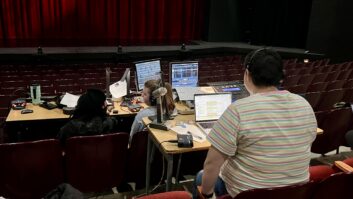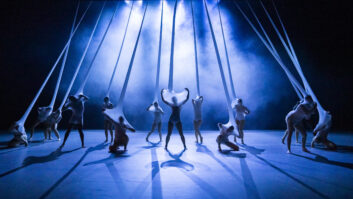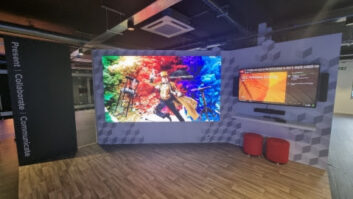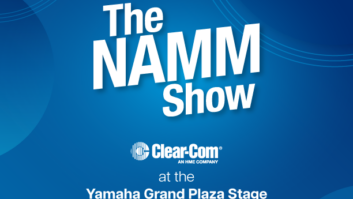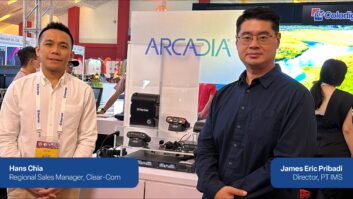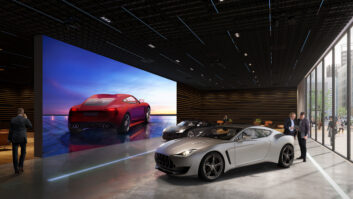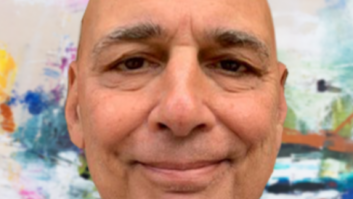Located in Ørestaden, near Copenhagen, the Danmarks Radio-owned DR Koncerthuset (Concert Hall) opened to the public on 17 January this year, bringing a conclusion to the many-chaptered story of this major new performance centre.
Designed by French architect Jean Nouvel, and incorporating a fusion of metal, glass and concrete, DR Concert Hall is every inch the cutting-edge contemporary live performance venue. Accordingly, expectations for the hall’s acoustical performance were extremely high, and a constant preoccupation of the technical team behind the project. The overall systems integrator was Løkken Productions, headed by Morten Løkken. He worked with audio systems installer/consultant Moto Audio Sales, whose COO and chief technical guru is Erik Falck.
In fact, to use the term ‘hall’ in a singular sense would be misleading, as Løkken’s responsibility encompassed the main concert hall (known as Studio 1), a large rehearsal facility (Studio 2), several smaller spaces, and the entire technical infrastructure. No wonder, perhaps, that work on the audio design actually commenced five years ago.
Following a comprehensive system shoot-out, the hall opted for an extensive L-Acoustics rigs for both main performance spaces. Decision made, L-Acoustics’ head of installation support, Cédric Montrezor, and Henrik Bonne (from Moto) were asked to contribute to the design and specification processes.
Complementing the intimate surroundings was a priority for the 1,800-seat Studio 1, which incorporates 15 terraced sections. “There were a number of factors that needed to be addressed to achieve a successful sound reinforcement installation,” says Montrezor.
“The asymmetrical geometry of the audience seating area, as opposed to the nearly symmetrical geometry of the concert hall, calls for a symmetrical speaker configuration with asymmetrical focus for each sound source. The stage position and configuration, while ideal for orchestral applications, becomes critical for sound reinforcement, especially in the low-frequency range.”
The result of these deliberations is an entirely flown sound system in a distributed configuration of 10 sound sources, all integrated into the venue canopy.
In order to achieve the “same tonal balance” across the system, the audio team specified five 115XT HiQ units and four 12XTs for announcements. The main performance sound reinforcement is handled by a six-box KUDO line source array, while six 8XTs and two 108P self-powered units are available for fill or monitor use. The entire system is powered and processed by two LA8 and five LA4 controller amplifiers.
Montrezor observes: “This sound system fulfils multiple types of application: speech reinforcement for announcements, electroacoustic support for contemporary music, [a] main sound system for live performance…”
A Yamaha DME64 digital mix engine is another integral part of the audio infrastructure, providing staff and visiting engineers with considerable flexibility. Løkken offers an illustrative example: “We have two channels of wireless and two channels of wired going directly to the DME, which means that we don’t need an engineer on the big desk if somebody wants to make an announcement or we have a performance that requires a small number of microphones.”
There is no permanent FOH desk in Studio 1, but the hall – and, indeed, other areas of the DR Concert Hall complex – is able to call on a substantial inventory of DiGiCo D1 consoles. An SSL 200 console is also available for recording and broadcast purposes.
Definition and clarity
Studio 2 serves primarily as a rehearsal hall. The 500-seat facility features a left/centre/right L-Acoustics system, driven and monitored once again by LA4 amplified controllers.
“The goal here is to get the best definition and clarity for all of the audience using the 12XT centre cluster, and to maintain even SPL, smooth tonal balance and stereo imaging using an ARCS left/right system,” says Montrezor.
Once more, a Yamaha digital mix engine system – in this case a DME24 – provides the hall with system processing and control.
Several other, smaller performance/rehearsal spaces also feature L-Acoustics systems, based around 8XTs and 12XTs at FOH, 115XT HiQ units for stage monitoring, and LA4 amplifier controllers for power, control and monitoring.
Meanwhile, the DR Concert Hall audio inventory also includes an extensive selection of wired and wireless systems that feature equipment from DPA, Sennheiser and Neumann. Danmarks Radio already owned a variety of DPA mics, including more than 20 4021 compact mics. For the new venue, DR asked for 12 of these to be modified to allow them to be connected directly to the main hall canopy. DR has also purchased four S5 surround mounts for suspension from the canopy.
Sennheiser kit in use in Studios 1 and 2 includes a total of five units of the EM 3532-U-D-EU UHF diversity receiver and eight units of the SKM 5200-BK-D UHF handheld transmitter. In the case of the latter, four of the units incorporate the MD 5235 head and four feature the Neumann KM105 head.
Favourable reaction
While it’s still relatively early days for this significant addition to Denmark’s live music scene, the response to date has reportedly been uniformly excellent from performers and audience members alike.
“All the feedback is very positive from musicians, the audience and the press,” confirms Falck. “They have all been ‘up in the sky’ about the place!”

